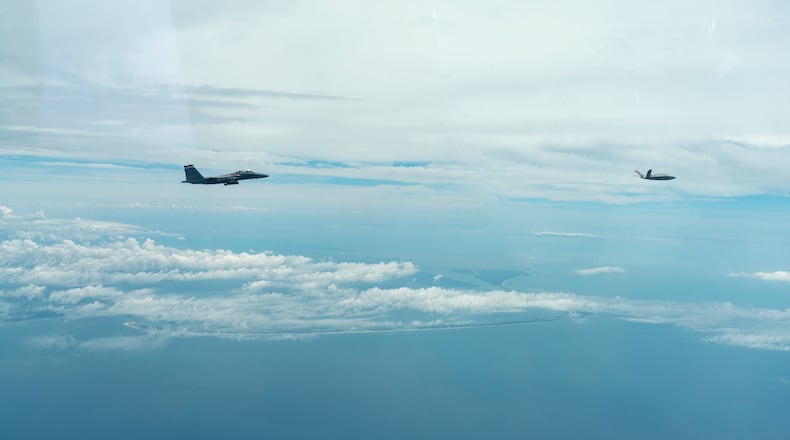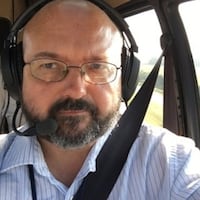AFRL is hailing the demonstration as a step forward in the Air Force’s quest for a collaborative combat aircraft (CCA) – the program seeking to develop unmanned combat air vehicles that are able to act as a reliable, supportive wingman to pilots.
“This sortie officially enables the ability to develop AI/ML (artificial intelligence/machine learning) agents that will execute modern air-to-air and air-to-surface skills that are immediately transferrable to the CCA program,” said Col. Tucker Hamilton, Air Force chief of AI test and operations.
Test units executed the flight over the Eglin Test and Training Complex in Florida, AFRL said in a statement.
“The flight was the culmination of the previous two years of partnership that began with the SkyBorg Vanguard program,” AFRL said.
Skyborg is AFRL’s AI system for unmanned aircraft.
“The mission proved out a multi-layer safety framework on an AI/ML-flown uncrewed aircraft and demonstrated an AI/ML agent solving a tactically relevant challenge problem during airborne operations,” Hamilton said.
This week in Dayton, Air Force Chief of Staff Gen. C.Q. Brown Jr. touched on the promise of CCA.
“CCA will break the mold,” Brown said at Air Force Life Cycle Industry Days, held at the Dayton Convention Center this week.
The effort may force Air Force leaders to explore new ways to fly, train, develop software and sustain equipment. “Many of the answers may require a whole different approach,” the four-star general said.
The algorithms used in the July 25 flight were developed by AFRL’s Autonomous Air Combat Operations team.
The project is a sensitive one. An AFRL spokesman Thursday said no new interviews will be granted on the test at this time due to “OPSEC (operations security) considerations.”
One difference between a drone controlled by a human operator on the ground and the Air Force’s CCA objective is the onboard AI control system with the latter vehicle. As Air Force Secretary Frank Kendall and others have described the vision behind the vehicles, the goal is to enable them to collaborate with piloted jets, helping to suppress enemy air defenses and playing other roles.
AFRL has released a video depicting the “millions of hours” of work on the project at https://www.youtube.com/watch?v=lneYH7ZAU78.
“We need to recognize that AI is here, it’s here to stay,” Hamilton says in the AFRL video. “It’s a powerful tool.’
“AI will be a critical element to future warfighting and the speed at which we’re going to have to understand the operational picture and make decisions,” said Brig. Gen. Scott Cain, AFRL commander. “AI, autonomous operations, and human-machine teaming continue to evolve at an unprecedented pace and we need the coordinated efforts of our government, academia, and industry partners to keep pace.”
About the Author


